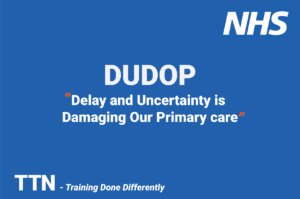That was some budget!
£22bn extra for NHS’ day-to-day expenditure… given there’s about a £4bn overspend and the need to cover existing commitments for new staff pay-deals, plus rising costs, how wisely and how quickly can the rest be spent?
Dunno…
A £3.1bn increase for hubs, diagnostic tests, and more beds.
How will the extra beds and hubs be staffed?
Dunno…
Roughly, £1bn of capital investment next year to address the backlog maintenance.
Good? Well, latest ERIC figures put the total backlog for estate repairs at nearly £14bn. So…
Dunno.
What are the spending plans for 2026 onwards?
Dunno…
Social care? I do know…
£600 million of new grant funding to support local core services.
This is a gambler’s budget. Borrowing, to grow the economy, to pay for the borrowing. It usually ends in tears.
As far as the NHS is concerned, it’s good news and a lot to keep ’em busy, and…
… I think, four things to give some thought to.
First, this is front-loaded money to fix waiting lists.
Understanding queue theory might give us a fresh perspective.
Stop talking about the millions in the queue. Start talking about how long people are waiting in the queue.
‘Customers’ perceive their waiting or queueing experience more in terms of how long they wait, rather than how many people there are ahead of them. For instance, border-control at the airport.
The queue has to move.
NHS queue-ers have no way of knowing how many there are in front of them but they know how long we’ve waited.
Make the queues move. Find a way to let people know they are moving. Disaggregate the lists, publish them by geography and specialty. Let people know where they are.
The majority waiting are waiting for a diagnostic, spending money on diagnostic kit is a good news.
The bad news is the money doesn’t come until next April. That’s not a disaster.
There’s a lot of planning and procurement hoops and hurdles to go through and all that could be got underway.
The goal is to reinstate the 18 week target by 2029’s election. By then, eight million could be on the list, but if they don’t wait more than 126 days… that’s ok… well, sort of.
Second… IT investment.
In the world of Cloud storage, new ways of computing, super-software and data analysis can come with a ‘more you use the more you pay’ deal.
This creates the question; is IT revenue or capital or is it something else? Is there a better way of accounting for it?
Capital generally means buildings and upkeep. Big ticket items like scanners and computers. But…
… increasingly we will live in a world of clicks on keyboards, not bricks in a building.
The days of buying a huge server to keep all our data, are gone. Today, data is stored in the Cloud, that can expand and contract with demand.
Machine learning, bought as part of a package with the new generation of intelligent scanners, that does first-pass-diagnostics, is a mongrel-beast of capital and revenue.
It’s really operational expenditure. A hybrid cost, merging capital and revenue. Can we create a new accounting heading… operational costs?
Would it make any difference?
Dunno…
… I just know we’re heading for a time where we’ll need more clicks than bricks and that could create problems for a system that only counts revenue and capital.
Third… productivity. Expect this to be in the spotlight.
The way it’s measured is clunky… treatment volumes, waiting times, and resource utilisation.
Are there better ways?
Patient recorded outcome measures and experience measures (PROMs). Capturing patient feedback is important but they are self assessed by patients and can be unreliable.
Integrated-care metrics, growing in importances as ICBs struggle to create better integration but it’s hard to measure and we’re not there yet.
Value based healthcare, prioritises treatments that are of the greatest value to patients.
A new hip for yer granny is very important for her but for a government focussed on economic productivity… a new hip for a working person would score more highly.
Perversely, if granny post-op, no longer needed the help of a domiciliary care company, the local economy takes a hit.
Staff wellbeing and retention, digital transformation, preventative health analytics and sustainability metrics…
…all give us data points.
A new metric combining; PROMs, flow metrics, workforce data, measuring high risk patients through preventative care, digital adoption and carbon footprint might be within the scope of some smart person to design numbers to give a better feel for how well the NHS really is doing.
Forth question; will the 10yr plan expected in the Spring come with investment or will it be another upheaval to fit in with the day job?
Dunno…
… but don’t worry about it…
… there’s a lot to be getting on with.
News and Comment from Roy Lilley
Contact Roy – please use this e-address roy.lilley@nhsmanagers.net
Reproduced at thetrainingnet.com by kind permission of Roy Lilley.








